What is a Plotter?
This post is a bonus post to my previous post, where you’ll see how I figured out whether I am a Plotter or a Panster. I also laid out the plotting method I’m going to try out to write my books.
Maybe you’ve read that post or maybe not. Since I know how difficult it can be to understand what a plotter is beyond what they are I’ll not only go over the fundamentals surrounding plotters for you but how they actually write. This will give you an idea of how to approach writing a book as a plotter, either using these methods or coming up with one of your own.
When it comes to writing a book or story every writer conducts the process differently. And there are three general categories that describe the majority of writer’s organizational approaches to this: Panster, Plotter, and Planster (which Grammarly thinks should be the word planter). I am sure there are writers that fall out of these categories but these three resonate with too many writers not to note and know about.
To begin I’ll define what a plotter is and then we’ll work through some of the ways they work and some methods you can try if you’re a plotter
A plotter is a writer who plans, outlines, and organizes their story, storyline, story ideas, and/or story events before they actually start writing their book.
The General Gist of Outlining Your Story – For Plotters
So now we know that all plotters plot before they write. Though how much plotting each plotter needs to write their book is up to the plotter themselves. People who usually need minimal planning like a straightforward outline, are often considered plansters. But many plotters have extensive planning methods to produce their masterpieces. Whether you’re a hardcore plotter or a borderline planster don’t forget…
- to develop your characters
- have an idea for your theme and messages
- to make sure that all parts of your planning are connected and work well together.
- that it’s okay to break away from what your outline may specify when you start writing your book
4 Ways to Plot Your Story as A Plotter
When I first discovered plotting my first thought was “well how do I plot?”. Like how exactly do I come up with a method of plotting and what do plotters even do to organize their stories?
When you research plotting methods you’ll most likely come across the famous and intricate method J.K. Rowling used to write her Harry Potter series. And while that method is amazing there are more for you to try and build off of. Here are 4 more plotting methods plotters can use to write their books.
- Mind Mapping
This method is perfect if you’re a visual learner or planner. While many other methods really help to put your story ideas and events into a logical timeline and order, mind mapping in particular makes clear the relationship between them. Mind maps can help you put them into a logical order, but relationships and connections are its specialties. This way a mind map is perfect for a story with a lot of characters or intertwining events.
Many mind maps are built around a center. Like in the picture above, with the light bulb in the center. A classic and effective way to try using a mind map to plot your story is to put your theme, plot, or synopsis in the center. Main events or main ideas could then branch out from the center. If you put your synopsis in the center you could start branching out with themes. If you put your theme in the center you could branch out with parts of your synopsis.
Mind maps can either branch outward or inward, but they progress with branches that specify, further, or give examples of their source (the idea/section they branched from.
Though not all mind maps begin from a center. Some mind maps start with scattered ideas that are then connected with branches to each other after the ideas are developed.
Mind maps can be whatever you want them to be because they can function how your mind functions. Even if it is an organized mess.
2. The Snowflake Method
The snowflake method is a method invented by Randy Ingersmason to help writers write their books. Following a 10-step plan writers would have everything they need to write their story from start to finish. This plan is very thorough and intricate, and while Ingermanson does suggest the amount of time a writer should put aside for each step, the whole process could take one writer days, weeks, or months to complete.
I’ve been reading up on this method on and off for a couple of months debating whether I should try it. And after understanding fully how this method works, I think I am. I may test it out on a new short piece or to re-write an old one. Who knows? But definitely expect more posts on this great method. With all that it entails, one mention in a blog post is not enough to cover everything.
Ingermanson’s 10 steps go as follows…
- Write a short one-sentence summary of your book.
- Expand that sentence into a paragraph.
- Write a one-page summary for every major character.
- Expand each sentence from the summary paragraph ( in step #2) into a paragraph.
- Write a one-page character synopsis for each main character. And a half-page synopsis for every other character that is important to the storyline
- Expand the one-page plot synopsis from step #4 into a four-page synopsis.
- Expand the character’s descriptions/synopses into full character charts.
- Use the four-page synopsis to make a list of scenes for your story.
- *An optional step- Write multiple paragraphs describing each scene from step #8
- Write your book/novel
Randy Ingermanson wrote a captivating book on this method and has an article on his website that guides us through the process. You can read the article here.
3. Your Own Unique Method
Come up with your own unique plotting method that suits your writing needs best. I do see that the more intricate a story is, the more intricate and complicated its planning may be. This is also the case similar for longer works as well.
If you’re coming up with your own unique method, consider how you prefer to organize things, how you come up with and document your story ideas, what your story needs to be complete and how you need to tackle your story elements by order of priority.
4. Following A Plot Structure
With this method, a plotter will use a plot structure as the backbone of their story outline. For some plotters, the plot structure alone is enough to get them going. But it could be taken further.
A plot structure makes way for more planning. So plotters can take more steps by breaking down and expanding the points of the plot structure into more specific or exploration parts. This is a popular way for a plotter to plot. Especially since there are a decent amount of plot structures to choose from.
If you do use this method. Picking a plot structure will be one of the first things you do.
Plotting On Your Own
Plotting can be anything you want it to be. But all plotting is thorough and considers more than one aspect of your story. Plotting should help you write and finish your story. If you find that plotting makes that impossible for you, then maybe you’re a panster, planster, or need another method just for you.
When considering these 4 methods remember that you can always make it your own, best suited for you. If you’re a potter and have a custom method that only you (and maybe a few friends) use, I want to know about it. Comment below all the weird, thorough, or confusing plotting methods that work for you.
Don’t just be a good writer, be a great one!
Until my next words (on here that is),
Christa









[…] found out about mind maps as a plotting method while writing this blog post – How To Write A Book As A Plotter: 5 Plotting Methods. The method sounded so fun and practical that it piqued my interest. But it wasn’t until I got […]